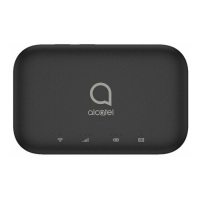19
The World Health Organizaon (WHO) considers that present
scienc informaon does not indicate the need for any special
precauons for use of routers. If individuals are concerned, they
might choose to limit their own or their children’s RF exposure
by liming the length of calls, or using “hands-free” devices to
keep routers away from the head and body. (fact sheet n°193).
Addional WHO informaon about electromagnec elds and
public health are available on the following website: hp://
www.who.int/peh-emf.
Note: This equipment has been tested and found to comply
with the limits for a Class B digital device pursuant to part
15 of the FCC Rules. These limits are designed to provide
reasonable protecon against harmful interference in a
residenal installaon. This equipment generates, uses and
can radiate radio frequency energy and, if not installed and
used in accordance with the instrucons, may cause harmful
interference to radio communicaons. However, there is no
guarantee that interference to radio or television recepon,
which can be determined by turning the equipment o and
on. The user is encouraged to try to correct the interference
by one or more of the following measures:
- Reorient or relocate the receiving antenna.
- Increase the separaon between the equipment and receiver.
- Connect the equipment into an outlet on a circuit dierent
from that to which the receiver is connected.
- Consult the dealer or an experienced radio/ TV technician
for help.
Changes or modicaons not expressly approved by the party
responsible for compliance could void the user’s authority to
operate the equipment.
For receiver devices associated with the operaon of a licensed
radio service (e.g. FM broadcast), they bear the following
statement:
This device complies with Part 15 of the FCC Rules. Operaon
is subject to the condion that this device does not cause
harmful interference.
For other devices, they bear the following statement:

